The internet can be described in many ways, but the root of its success is the power to engage people.
Never before in the history of commerce have there been so many accessible and integrated ways to build connections, share ideas and grow businesses at breathtaking speed with the input of engaged and innovative employees.
With these tremendous results, one might think the internet has nothing new to offer. Rest assured, there are still ways to tap into its power. For instance, your firm can use the internet to build an inbound recruiting process to meet and hire the best possible employees.
Inbound recruiting: pull don’t push
In a recent blog, I described employer branding as reputation management in action. Think of inbound recruiting as a similarly dynamic initiative, pulling the best possible new hires towards you, rather than pushing out information in what is often a “let’s wait and see” advertising exercise that may reap unsatisfactory outcomes and cost money and time.
How does your company benefit?
Inbound recruiting uses your existing communications channels – everything from email to social media – to create awareness of your company and support a strategic plan to:
- Establish a process for attracting the right potential talent;
- Use creativity and data to assess skill sets and attitudes;
- Engage prospective employees so they keep your company in mind; and
- Integrate inbound recruitment into your established HR processes.
What’s the secret to its success?
- Inbound recruiting empowers job seekers – within a framework designed by you – to share what they can bring to the table.
- In doing so, participants provide “early evidence” of whether or not they fit the roles you are trying to fill and if they are a good match with your organization’s culture.
- Inbound recruiting avoids the downfall of traditional, large-scale employment campaigns which are costly, cumbersome and often “hit or miss” in terms of end results.
- Interactivity is key. Inbound recruiting helps you engage with, assess and stay in touch with potential employees.
HubSpot: inbound recruiting is its baby
It’s not surprising that HubSpot, the creator of inbound marketing, is also the genius behind inbound recruiting. Just as inbound marketing transformed how businesses build web-focused clients, inbound recruiting is the next chapter on hiring the best and the brightest through online channels.
Here is how HubSpot defines inbound recruiting:
Inbound recruiting is the process of taking your existing inbound processes and content to scale your hiring funnel. You create content and a conversion path on your site to drive potential hires into your recruiting funnel. Then, you nurture these candidates until the right position comes available or you use qualifying measures to disregard candidates who are not the right fit based on their actions.¹
Interested in learning more about HubSpot’s inbound recruiting approach? Consider a two-step approach.
First, review “What is Inbound Recruiting”2 which provides a concise overview and explanation of inbound recruiting methodology.
Second, Take a look at “How to Use Inbound Recruiting to Source, Interview & Hire Top Talent,”3 which is packed with useful information on why inbound marketing should be an essential part of your employee-hire toolkit.
Additional resources
Talking Talent
As you consider ways to use inbound recruiting to advance your hiring processes, Beamery.com’s Talking Talent site4 is a useful resource. It provides a helpful list of inbound recruiting components with step-by-step instructions on getting started.
Mojomedialab
This site5 offers additional inbound recruiting ideas. Its easy-to-read Q&A format includes bullet points that focus on channels and contacts you can use to design and build your firm’s inbound recruiting strategy.
Show what you know: work with your HR team
HubSpot notes, “Recruiters need to think more like marketers to create an engaging, helpful, candidate experience.”6 Use your marketing savvy to help your HR team build a hiring process that is strategic, digital and focused on cultivating the best available candidates. Share this article with them so they can see the benefits of inbound recruiting and learn more about it.
Getting started takeaway
Not sure where to start? Consider an inbound recruiting pilot project for a particular position you need to fill. Use participants’ data and feedback, along with input from HR members and department colleagues involved in the hiring exercise, to refine your organization’s approach for future, wide-spread recruitment/hiring needs.
1 https://blog.HubSpot.com/agency/inbound-recruiting-talent
2 https://www.HubSpot.com/inbound-recruiting
3 https://blog.HubSpot.com/agency/inbound-recruiting-talent
4 https://beamery.com/blog/inbound-recruitment
5 https://www.mojomedialabs.com/blog/create-an-inbound-recruiting-machine
6 https://www.HubSpot.com/inbound-recruiting



